Rock and awe
Rock and Awe: 10 Rock Formations You Should Add to Your Bucket List
Text and photos by Heather Cline
 
Sunrise through rock formations, Alabama Hills |
The United States is full of rock formations that look like they've been plucked right out of a sci-fi movie set or were specially designed works of art. From the striking towers rising out of Mono Lake to goblin-like hoodoos in Utah, these geological features are as diverse as the landscapes they inhabit. Whether carved by water, shaped by wind, or forged over millions of years, these formations offer amazing views and a glimpse into the Earth’s ancient history. Ready to explore ten of the most fascinating ones?
1. Mono Lake Tufas
- Location: Shores of Mono Lake, near Lee Vining California
- How they are formed: The tufa towers take shape beneath the water when calcium-rich freshwater springs merge with the carbonate-rich, alkaline lake water. This interaction triggers the precipitation of calcium carbonate (limestone), which gradually accumulates over time.
- What gives it that color: Limestone
- Unique feature: The tufa towers are visually striking, rising from the lake's surface and creating a surreal landscape.
 
|
2. Bryce Canyon
- Location: Southwestern Utah, near the city of Bryce
- How it was formed: Bryce Canyon isn’t a typical canyon but a collection of natural amphitheaters. It was shaped as water and ice gradually wore away the Paunsaugunt Plateau's rock layers, including limestone, siltstone, and sandstone.
- What gives it that color: Iron oxide (rust) and manganese oxides present in the Claron Formation, a type of limestone deposited in a large freshwater lake about 50 million years ago.
- Unique feature: Hoodoos, tall, thin spires or pillars of rock formed by erosion.
 
|
3. Antelope Canyon
- Location: A few miles east of Page, Arizona, near the Arizona-Utah border.
- How it was formed: Antelope Slot Canyon developed over thousands of years as flash floods and wind eroded the Navajo Sandstone, gradually carving out its narrow passageways and distinctive formations.
- What gives it that color: The canyon's vibrant hues, spanning shades of red, orange, and yellow, result from sunlight interacting with the iron oxide-rich Navajo sandstone that forms its walls.
- Unique feature: Wave-like sandstone shapes combined with the interplay of light and shadow create an otherworldly ambiance, especially around midday, as sunlight filters through the canyon's slender openings.
 
|
4. Valley Of Fire State Park
- Location: Approximately 55 miles northeast of Las Vegas, in the Mojave Desert, near Lake Mead National Recreation Area.
- How it was formed: The striking red sandstone formations, emerged from ancient sand dunes that hardened over millions of years through natural processes such as uplift, faulting, and erosion.
- What gives it that color: Red Aztec sandstone formations were created from ancient sand dunes, solidified and tinted by iron oxide over millions of years.
- Unique feature: The formations appear to be "on fire," particularly during sunrise and sunset.
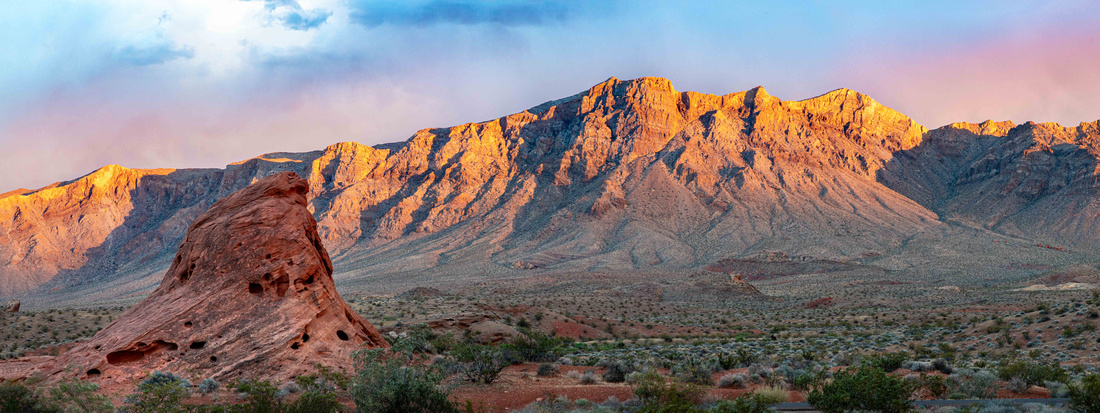 
|
5. The Wave
- Location: The formation is situated on the slopes of the Coyote Buttes, in the Paria Canyon-Vermilion Cliffs Wilderness Area, near the city of Kanab.
- How was it formed: Over millions of years as water first carved troughs into the Navajo Sandstone, and then wind further shaped the landscape.
- What gives it that color: The Wave's distinctive and vivid shades of red and orange come from the iron oxide (rust) and other minerals embedded in the Navajo Sandstone.
- Unique feature: Undulating, ribbon-like waves of red and orange sandstone.
 
|
6. White Pocket
- Location: On the Paria Plateau in northern Arizona, approximately 75 miles east of Kanab, Utah.
- How was it formed: White Pocket's distinctive terrain developed over millions of years through tectonic shifts, erosion, and the weathering of Jurassic-era sandstone. Some theories also propose that a massive sand-slide, potentially caused by an earthquake, contributed to its formation.
- What gives it that color: The striking range of colors, from vivid reds and oranges to brilliant whites, results from iron oxide (hematite) creating the red and orange tones, while the white coloration comes from mineral leaching and the presence of quartz.
- Unique feature: The "cauliflower rock" or white-layered sandstone formations, which contrast with the surrounding reddish Navajo sandstone.
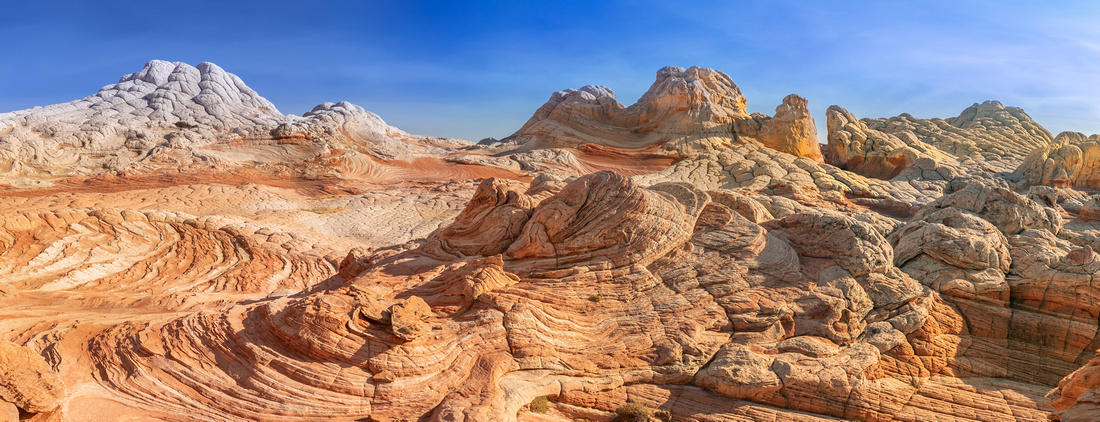 
|
7. Half Dome
- Location: The eastern end of Yosemite Valley within Yosemite National Park in California.
- How it was formed: Half Dome's distinctive shape was formed through a series of geological events, starting with the cooling of magma deep underground. This was followed by the uplift and erosion of the overlying rocks, and eventually, glacial erosion sculpted the granite dome into its iconic form.
- What gives it that color: The mix of light and dark hues comes from the granodiorite rock it's made of, which contains large crystals of biotite, hornblende, and feldspars, as well as honey-colored sphene and smoky quartz.
- Unique feature: Its unique shape is a huge granite dome with one steep, vertical face and three smooth, rounded sides, resembling a dome sliced in half.
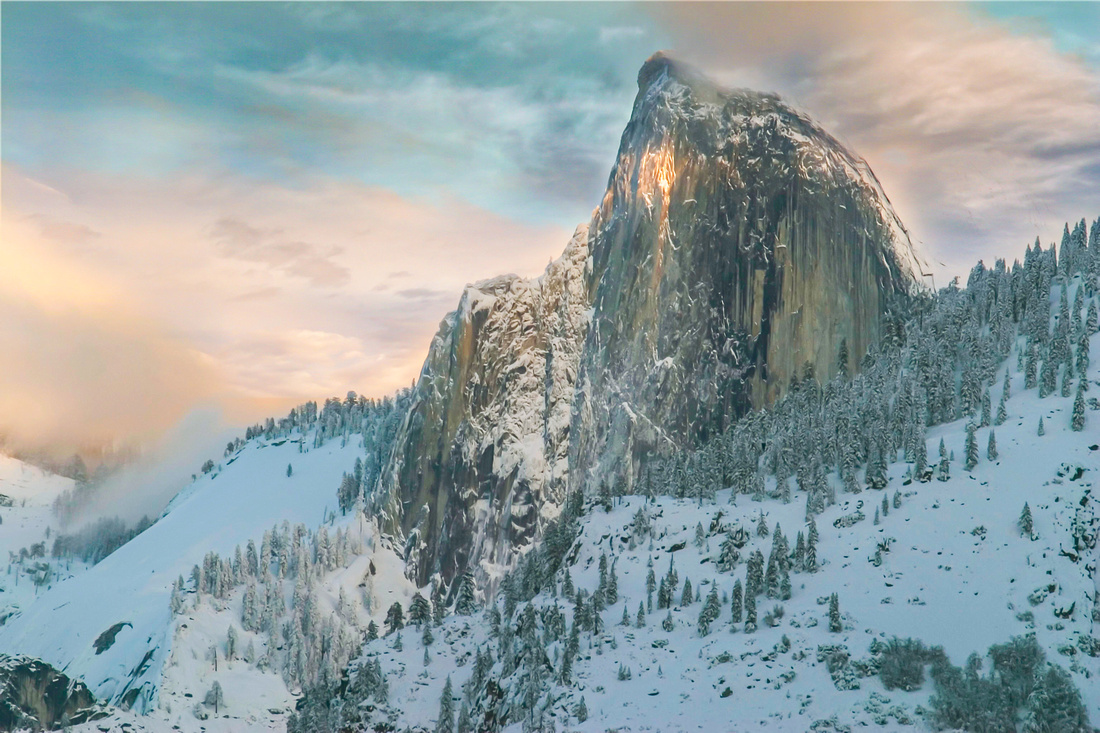 
|
8. Bisti Badlands
- Location: The Four Corners region of New Mexico, approximately 40 miles south of Farmington.
- How they were formed: The Bisti/De-Na-Zin Wilderness, also known as the Bisti Badlands, was shaped over millions of years by sediment deposits from an ancient inland sea, followed by land uplift and gradual erosion.
- What gives it that color: The unique colors, ranging from red and orange to yellow, gray, and purple, are due to the different mineral compositions of the various sedimentary rock layers deposited over millions of years.
- Unique features: Hoodoos, sculpted cliffs, and unique rock formations that look like they are on another planet.
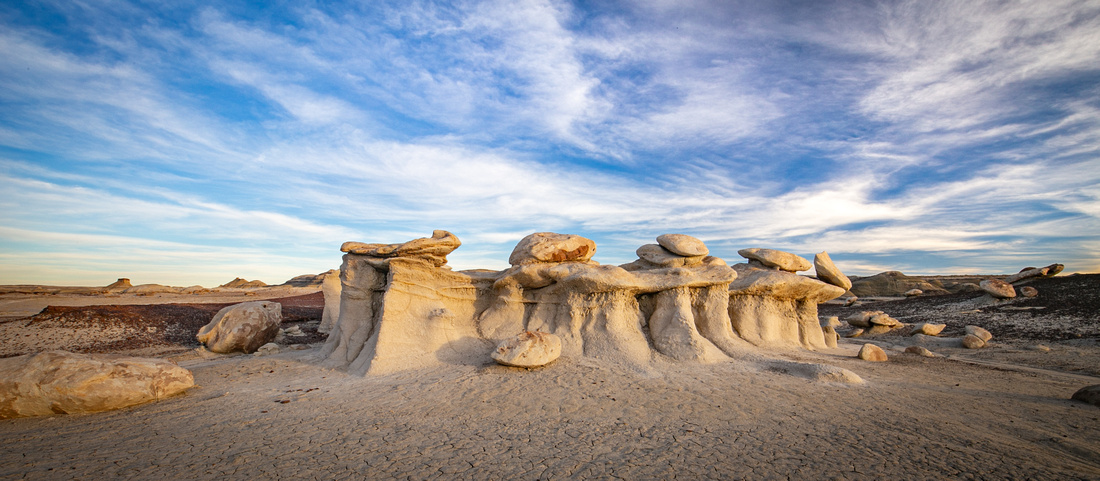 
|
9. Goblin Valley
- Location: Off State Highway 24, near the town of Hanksville, Utah approximately 50 miles southwest of Green River.
- How they are formed: Goblin Valley's unusual rock formations, called hoodoos, were created through the slow erosion of Entrada sandstone, which was laid down roughly 170 million years ago when the region bordered an ancient sea.
- What gives it that color: The weathering of the Entrada Sandstone, a reddish-brown rock formation that is rich in iron oxide.
- Unique feature: The landscape of thousands of "goblins," which are unique, mushroom-shaped hoodoos.
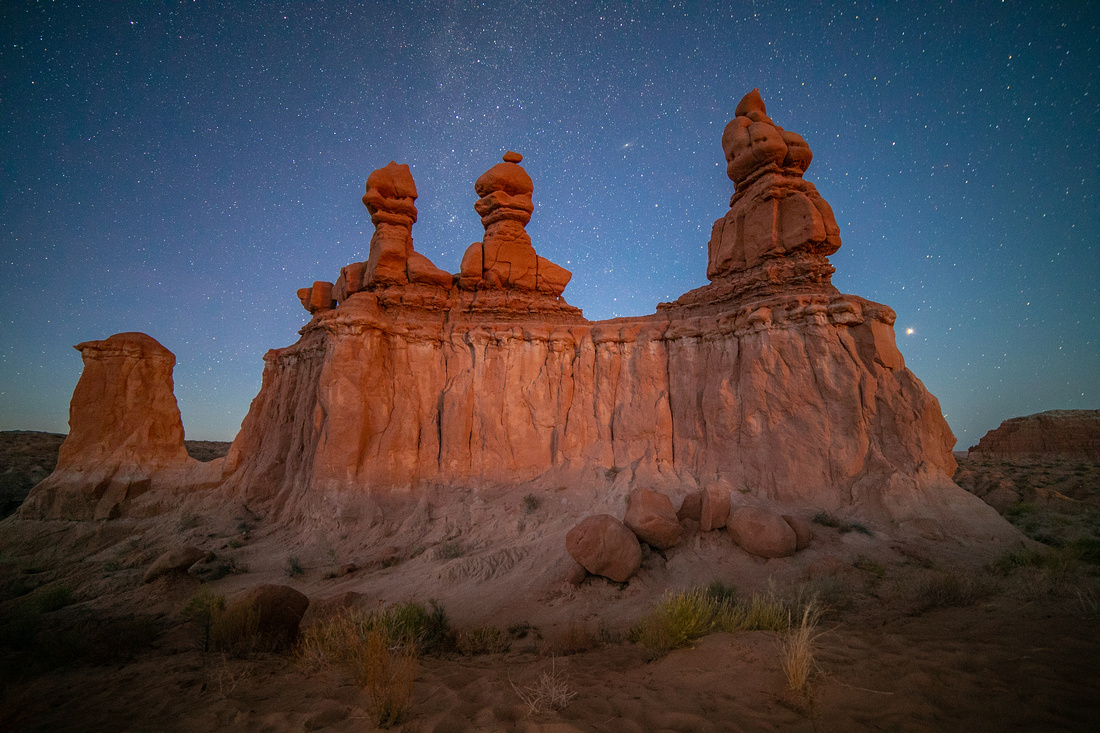 
|
10. Alabama Hills
- Location: Just west of Lone Pine in Southeastern California, off Highway 395, between the Sierra Nevada and the Inyo Mountains.
- How they are formed: The Alabama Hills were shaped by tectonic uplift and subsequent erosion over millions of years, specifically around 100 million years ago.
- What gives it that color: The Alabama Hills are made up of granite, with their distinct mottled beige and black appearance resulting from the oxidation of iron minerals in the rocks, gradually stained by weathering over millions of years.
- Unique feature: The smooth, weathered hills and towering boulders stand in striking contrast to the sharp, rugged peaks of the Sierra Nevada mountains to the west, forming a unique landscape perfect for outdoor adventures, photography and filming.
 
|
These rock formations are a dream for photographers—full of color, texture, and dramatic light. From the glowing reds of the Valley of Fire to the swirling patterns of The Wave, each spot is a unique masterpiece. Whether you're a pro or just snapping photos for fun, grab your camera and start exploring. These aren’t just rocks—they’re nature’s artwork, waiting to be captured!